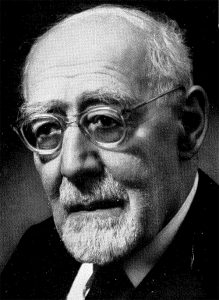
In the aftermath of the Second World War and the Holocaust, German Jewish survivors confronted a major challenge: How should they approach their culture and its legacy in the context of the rise of Nazi Germany and the destruction of European Jewry? How might they rebuild their lives as a community of émigrés and refugees, now scattered around the world?
In the late 1940s and 1950s, leading Jews from Germany proposed a number of ideas for how to commemorate their history. Eugen Täubler, the founding director of the Gesamtarchiv der deutschen Juden, who fled to Cincinnati in 1941, proposed in 1946 to form of a “Leo Baeck Library” of German Jewry at Columbia University, named in honor of the famed German Jewish rabbi Leo Baeck. Subsequently, Täubler suggested that such a memorial library might be established at Hebrew Union College, where there were a number of German Jewish émigré scholars including himself and his wife Selma Stern-Täubler, a prominent scholar in her own right and an archivist at the American Jewish Archives.[1]Eugen Täubler to Leo Baeck, 11 Sept. 1946, Universitätsbibliothek Basel, NL 76 E1 #89 A few years later, in the early 1950s, figures including Herman Müller and Siegfried Moses discussed the possibility to produce a “monumental” historical work documenting German Jewish history from the Enlightenment to the Holocaust.
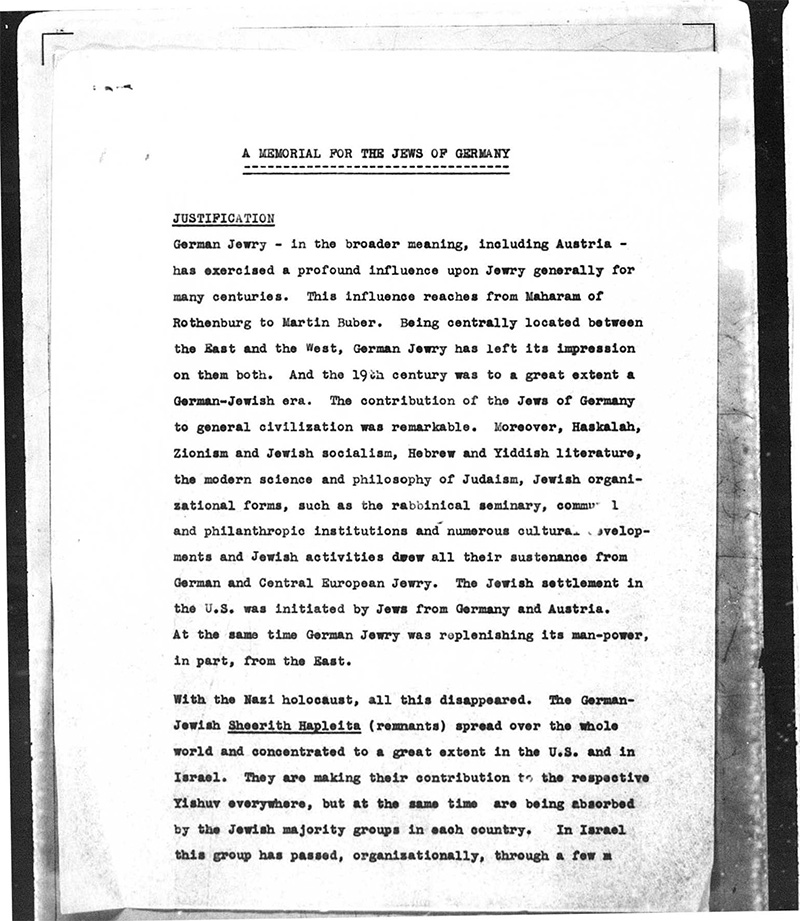
These ideas ultimately came together in the formation of the Leo Baeck Institute in 1954-55 under the aegis of the Council of Jews from Germany. Following a conference in Jerusalem, three scholarly centers were established in major centers of the German Jewish diaspora: in Jerusalem, in London, and in New York City.
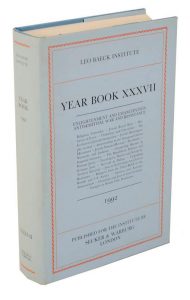
Each of the branches took on a task in the commemoration of German Jewish history and culture. Notably, the London branch took upon itself the project of producing this “Gesamtgeschichte” or total history; but they quickly decided that they should promote research in German Jewish history in preparation for this monumental task. As a result, they published the annual Leo Baeck Institute Year Book, which is still one of the leading publications in German Jewish history. The New York branch was dedicated to the project of documenting German Jewish history, leading to the formation of the major archive there.
The early efforts of the LBI’s archive in New York were focused on gathering memoirs from German Jewish refugees and émigrés. They also expanded their collection with the community and personal archives, among them the research files of Jacob Jacobson, the former Gesamtarchiv director. By 1970, the Leo Baeck Institute’s archives and library came to represent one of the leading repositories of historical materials on German Jewry.
In 1995, the Leo Baeck Institute joined the Center for Jewish History as a founding partner institution. Today, its archives are available in the Lillian Goldman Reading Room.
LBI’s collections today include 80,000 volumes of books, including a rare book collection, and 1,600 periodical titles. In addition, its art and objects collection holds about 200-300 paintings, about 4000 prints, about 4000 objects. Among these objects, for instance, are Moses Mendelssohn’s reading glasses.
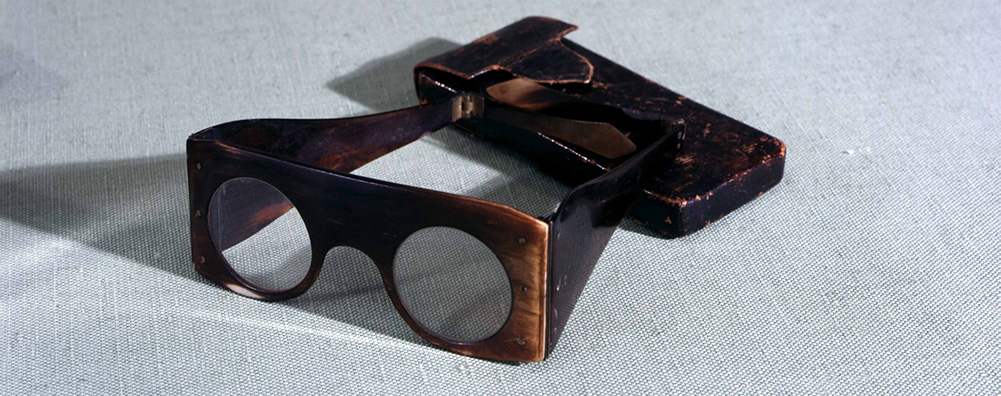
In the 2000s, LBI began the tremendous project of digitizing its collections. Today, its archives are digitized in their entirety. The result is DigiBaeck, compromising more than 3.5 million pages of scanned materials which are available via the Internet Archive.
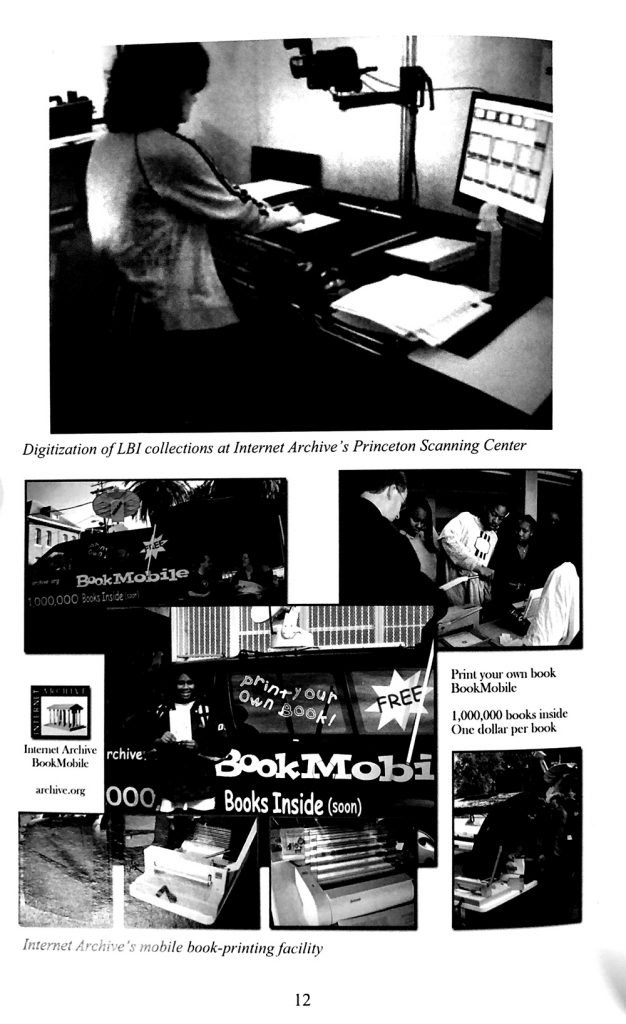
The Leo Baeck Institute has maintained an office in Berlin since 2001, where it works to strengthen connections with Jews as well as non-Jews in Germany. Researchers can also access LBI materials at the Jewish Museum Berlin, where there are duplicate copies of microfilm collections (about 4,500 total).
LBI produces a number of online programs and projects including the “1938 Project,” which documented the day to day experience of Jews in Germany throughout 1938 leading up to Kristallnacht.
The LBI offers a number of research fellowships for scholars pursuing German Jewish history.
Research Details
The LBI’s archives are accessible at the Center for Jewish History, and most of the collections are also available online via DigiBaeck. There are extensive online finding aids as well.
The photo collection (about 25,000 items) is also digitized. Patrons can use low resolution images within fair use stipulations, or order high resolution prints for publishing and commercial uses.
Researchers can also contact LBI with reference questions via the Dr. Robert Ira Lewy Research and Reference Service.
Further Reading
- Max Kreutzberger, ed. Leo Baeck Institute New York: Bibliothek und Archiv. Schriftenreihe wissenschaftlicher Abhandlungen des Leo Baeck Instituts 22. Tübingen: Mohr, 1970.
- Max Kreutzberger. “The Library and Archives of the Leo Baeck Institute in New York.” Jewish Book Annual 29 (1971): 47–54.
- Kurt Maier. “The Library of Leo Baeck Institute.” Journal of Library History 12, no. 2 (1977): 177–86.
- Frank Mecklenburg. “Deutsch-jüdische Archive in New York und Berlin: drei Generationen nach dem Holocaust.” In Haskala und Öffentlichkeit, edited by Julius H. Schoeps, Karl E. Grözlinger, Willi Jasper, and Gert Mattenkott, 311–24. Berlin: Philo Verlagsgesellschaft, 2001.
- Ruth Nattermann. “A Struggle for the Preservation of a German-Jewish Legacy. The Foundation of the Leo Baeck Institute in New York.” European Judaism 45, no. 2 (2012): 90–102.
- Christhard Hoffmann, ed. Preserving the Legacy of German Jewry: A History of the Leo Baeck Institute, 1955–2005. Tübingen: Mohr Siebeck, 2008.
References
| ↑1 | Eugen Täubler to Leo Baeck, 11 Sept. 1946, Universitätsbibliothek Basel, NL 76 E1 #89 |
|---|